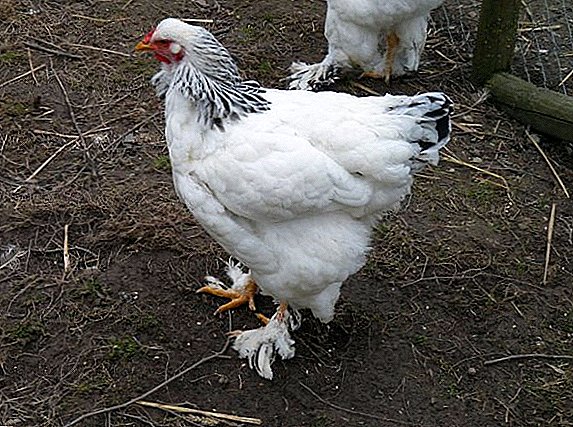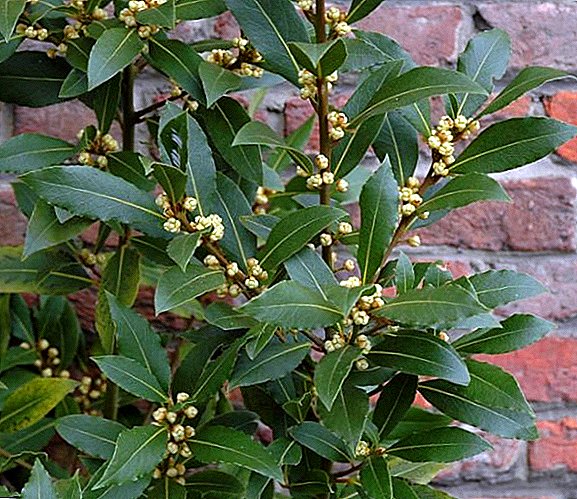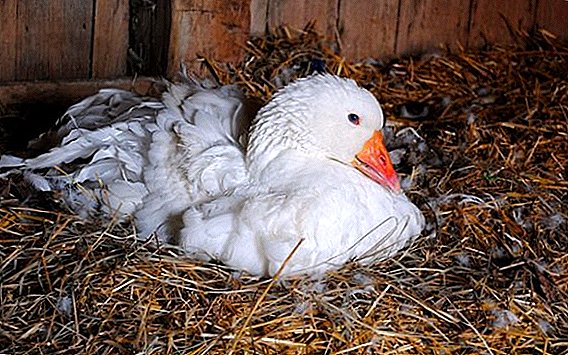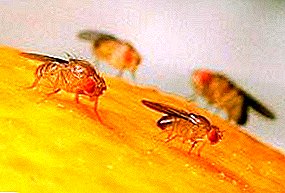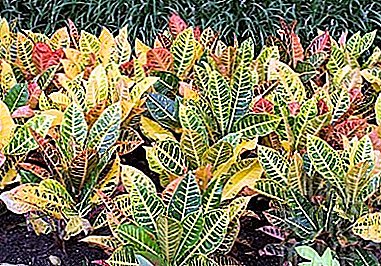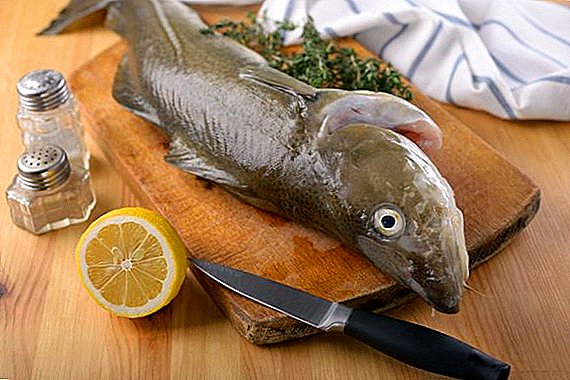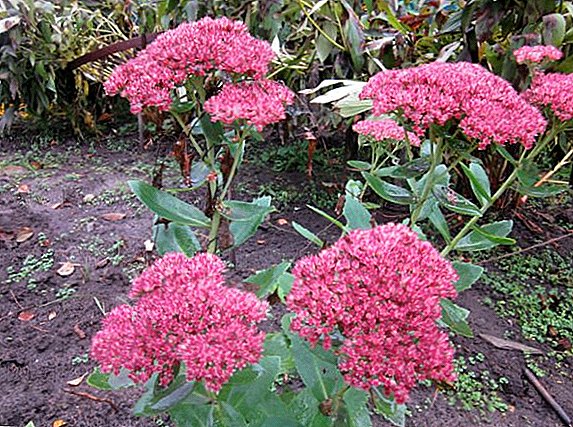 Perennial plant with fleshy leaves and purple inflorescences, has many names (bunny cabbage, creak, stonecrop purple)and is famous for its healing properties. The plant genus includes about 600 species, which are both winter-hardy and tropical, evergreen and deciduous. Consider the useful properties and use of stonecrop.
Perennial plant with fleshy leaves and purple inflorescences, has many names (bunny cabbage, creak, stonecrop purple)and is famous for its healing properties. The plant genus includes about 600 species, which are both winter-hardy and tropical, evergreen and deciduous. Consider the useful properties and use of stonecrop.
Chemical composition of the plant
All types of stonecrop are medicinal and have approximately the same chemical composition:
- Alkaloids - have a hemostatic, analgesic effect, help to calm the nervous system and lower blood pressure.
- Tannins - have anti-inflammatory, antimicrobial, regenerating effect, normalize the gastrointestinal tract.
- Glycosides - have a calming, diuretic, antibacterial and antimicrobial action, promote sputum discharge and vasodilation.
- Vitamin C - normalizes the work of the endocrine glands, the central nervous system, the work of blood formation, strengthens the immune system, promotes the removal of toxins and the absorption of iron by the body.
- Organic acids - stimulates hematopoietic, metabolic processes and insulin production, a calming effect on the central nervous system. They improve the functioning of the gastrointestinal tract, the body's assimilation of iron, potassium and magnesium, the condition of the blood vessels, reproductive functions, and immunity. They reduce cholesterol, neutralize and eliminate toxins.
- Ash - has anti-inflammatory, disinfecting effect, slows blood clotting and dissolves intravascular blood clots.
- Flavonoids - have a choleretic effect, normalize the work of the heart, adrenal glands, blood pressure.
- Saponins - have a regenerating, diuretic, sedative effect, promote sputum secretion, prevent the formation of sclerotic plaques.
- Coumarins - have a depressant effect on tumor cells.
- Mucus - have anti-inflammatory and enveloping effect, as a result of which they contribute to the release of sputum.
- Sahara - provide the body with energy.
- Wax - possesses bactericidal binding properties, contributes to the regeneration process.
Pharmacological properties of a stonecrop purple
 Bunny cabbageAccording to the results of a pharmacology study, it has many medicinal properties. It restores blood, heals wounds, improves heart function. Stalk magenta It is one of the most powerful biogenic stimulants and exceeds the aloea preparations by biological activity.
Bunny cabbageAccording to the results of a pharmacology study, it has many medicinal properties. It restores blood, heals wounds, improves heart function. Stalk magenta It is one of the most powerful biogenic stimulants and exceeds the aloea preparations by biological activity.
The juice of the plant eliminates the violation of protein metabolism, which are caused by blood loss. It promotes the regeneration of blood proteins, increasing their concentration in the serum. Also, juice stimulates the central nervous system.
Important! To take the juice of a stonecrop of purple in its pure form, it is necessary to take 30 ml several times a day.
The extract from the shoots of the purple sedum is part of the medical preparations that stimulate metabolic processes and enhance tissue regeneration.
Sight of Magenta: Useful Properties
The plant has anti-inflammatory properties in diseases of the urogenital system, stimulates the heart and central nervous system, helps a lot with female infertility and epileptic seizures, is used in the treatment of cancer, has a tonic effect with general weakness, nervous disorders and impotence.
 The plant is widely used in the treatment of pneumonia, bronchitis, hepatitis, as a wound healing. In surgery and ophthalmology use the regenerating property of stonecrop. It accelerates the healing of bone tissue, is used in the treatment of injuries of the cornea.
The plant is widely used in the treatment of pneumonia, bronchitis, hepatitis, as a wound healing. In surgery and ophthalmology use the regenerating property of stonecrop. It accelerates the healing of bone tissue, is used in the treatment of injuries of the cornea.
In otolaryngology, it is used as an anti-inflammatory property for sore throat and stomatitis. In addition, it has diuretic, analgesic, hemostatic, laxative properties.
Did you know? According to legend, Ilya Muromets was sitting on the stove for 33 years due to illness of his legs. The squeak of grass helped him to cope with his illness.
How to use a stonecrop purple in traditional medicine
Sedum is widely used in folk medicine for ingestion, rinsing, poultices in the form of juice, decoctions, tinctures, ointments, powder. As an antihelminthic leaf decoction is used, and freshly weed herb is used to treat hemorrhoids and acne.
Ochitkok purple in the treatment of cancer is more effective than the hemlock. Firstly, it does not have toxic substances, and secondly, many times exceeds the properties of other plants. It is used as an auxiliary treatment in oncology.
 You can prepare an antitumor infusion according to this recipe: 1 tbsp. A spoonful of crushed shoots of plants are brewed with 1 cup of boiling water and allowed to infuse for about two hours. Take four times a day for 50-70 ml at one time.
You can prepare an antitumor infusion according to this recipe: 1 tbsp. A spoonful of crushed shoots of plants are brewed with 1 cup of boiling water and allowed to infuse for about two hours. Take four times a day for 50-70 ml at one time.
Skripun herb is used in the form of tinctures, powders, extract, ointment, juice, which can be prepared according to the following recipes:
- Tincture. 150 g of crushed leaves of stonecrop, 0.5 liters of vodka. Insist at least two weeks. Take the tincture before meals 30 drops 3 times a day. Effective with nervous disorders.
- Powder. Dried leaves are ground and stored in a glass container. Take three times a day for 1 tsp. Most often, the powder is taken as a tonic.
- Infusion. 1h l 300 ml of boiling water is poured into the crushed raw material. Infused solution for about four hours. Accept after eating 0.5 glass 3 times a day. Used for pneumonia, kidney disease, epilepsy, as well as an external agent in the treatment of purulent wounds.
- Extract. From the shoots of the plant is prepared infusion in a ratio of 1:10 for internal use or 1: 5 for outdoor use. For better steaming dishes with infusion hold for 15-20 minutes in a water bath. Next, it is filtered and evaporated to a volume equal to half the original. Take an extract of 15-20 drops 3-4 times a day. It is an active biostimulator.
- Ointment. Use fresh grass juice. It is mixed with melted butter in a 1: 1 ratio. The ointment is applied externally with ulcers, rashes, purulent wounds.
- The juice. Fresh leaves of the plant are washed, treated with boiling water and minced. From the resulting mass squeeze the juice with gauze. Dilute the juice with water in the ratio 1: 1 and boil for two minutes. Take 1 teaspoon 3 times a day during the meal. When applied externally, a cloth moistened with juice is applied to the damaged area.
The use of stonecrop in cooking
 Sedum is valuable not only as a medicinal and ornamental plant, but also as a honey-bearing plant. Beekeepers mark it as a plant that can release nectar even in dry hot weather. It is also used in nutrition. To do this, use the leaves and young shoots of the plant. They have a pleasant sour taste. In cooking, the plant is added to salads and soups, and in the winter it is salted and fermented.
Sedum is valuable not only as a medicinal and ornamental plant, but also as a honey-bearing plant. Beekeepers mark it as a plant that can release nectar even in dry hot weather. It is also used in nutrition. To do this, use the leaves and young shoots of the plant. They have a pleasant sour taste. In cooking, the plant is added to salads and soups, and in the winter it is salted and fermented.
Did you know? At the time of Charlemagne there was an order - to sow stonecrop on the roofs of houses. It was believed that he would save the home from a lightning strike.
Sedum purple: how to procure medical raw materials
It should be remembered that the stonecrop has the greatest therapeutic ability during flowering, so it is better to prepare the raw materials during this period. It is necessary to gather grass in dry weather, cutting off young shoots with the help of scissors. Harvest also the roots of the plant. Harvesting of roots is carried out in the fall. They are cleaned from the ground, washed, cut along, dried in the sun and dried in a ventilated room. Roots retain healing properties for three years.
 With the purpose of treatment also use the flowers of the plant, but much less. Of them prepare tea, which they drink with heart and stomach pain, liver disease and cataracts of the upper respiratory tract. As an external remedy, flowers are used for eczema and skin tuberculosis in children.
With the purpose of treatment also use the flowers of the plant, but much less. Of them prepare tea, which they drink with heart and stomach pain, liver disease and cataracts of the upper respiratory tract. As an external remedy, flowers are used for eczema and skin tuberculosis in children.
The grass of the hare cabbage belongs to the succulent form, that is, it has the ability to retain moisture well and has juicy leaves and shoots. To speed up the process of drying raw materials, it is necessary to scald the plant with boiling water. As a result, living tissue is killed and the ability to retain moisture disappears.
To dry the plant is necessary in the attic or under a canopy, but in no case under the direct rays of the sun. Dried grass has a weak peculiar smell and retains its medicinal ability for two years.
Contraindications
 When using a stonecrop purple for treatment, it is necessary to know that it has practically no contraindications. Of all the species of sedum, only sedum is poisonous. Its use should be strictly controlled and not exceed the required dosage, as this can lead to vomiting, dizziness and cardiac arrest. The use of sedum caustic is contraindicated in children, pregnant women, hypertensive patients, people with increased nervous excitability.
When using a stonecrop purple for treatment, it is necessary to know that it has practically no contraindications. Of all the species of sedum, only sedum is poisonous. Its use should be strictly controlled and not exceed the required dosage, as this can lead to vomiting, dizziness and cardiac arrest. The use of sedum caustic is contraindicated in children, pregnant women, hypertensive patients, people with increased nervous excitability.
Important! It is not recommended to take the sedum juice for cancer, as well as gastritis.
If you decide to start treatment with a stone sedum, consult your doctor just in case. Still, treatment under the supervision of a specialist always gives greater effectiveness and helps to avoid exacerbations of the disease.




